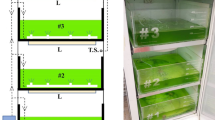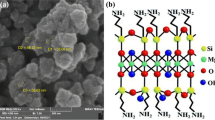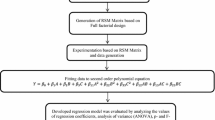Abstract
The CO2 emission is increasing every year and threatening both humans and the ecosystem. Carbon capture technological innovations have emerged as a potential solution to mitigate this emissions. Due to its high capacity of photosynthetic activity, CO2 sequestration by microalgae, such as Chlorella vulgaris has attracted much attention as a carbon capture system. The growth of this microalgae is influenced by various physicochemical factors. By designing the Design of Experiment (DoE) with Response Surface Methodology (RSM), the effect of several independent factor can be evaluated to optimize Chlorella vulgaris growth condition and CO2 conversion. This study aims to identify the most impact factors affecting C. vulgaris growth through investigating the variations in physicochemical factors of aeration, initial pH, dark light regime, saline, and substrates concentration using DoE. In this study, C. vulgaris was cultivated in batch culture for 10 days with 8 experiments that were designed under various conditions as per experimental run. Biomass growth was observed using optical density and analyzed by first order regression. The result shows that aeration parameters was statistically significant affect microalgae growth, evidence by p-value below 0.05 at all observation points. Runs with aeration treatment showed a prolonged exponential growth phase and delayed onset of the deceleration phase. Additionally, this study also found that the initial pH level also significantly affects growth at the last day of cultivation. Cultures with a higher initial pH reached the stationary phase earlier than those with a lower pH. Thus, the growth of C. vulgaris can be optimized by adding aeration treatment into culture media and regulating initial pH around 8 to enhancing carbon fixation and biomass yield.



Similar content being viewed by others
References
Hanifa, M., Agarwal, R., Sharma, U., Thapliyal, P. C., & Singh, L. P. (2023). A review on CO2 capture and sequestration in the construction industry: Emerging approaches and commercialised technologies. Journal of CO2 Utilization. https://doi.org/10.1016/j.jcou.2022.102292
Pörtner, H.-O., et al. (2022). Technical summary. In H.-O. Pörtner, D. C. Roberts, E. S. Poloczanska, K. Mintenbeck, M. Tignor, A. Alegría, M. Craig, S. Langsdorf, S. Löschke, V. Möller, & A. Okem (Eds.), Climate Change 2022: Impacts, adaptation and vulnerability. Contribution of working group ii to the sixth assessment report of the intergovernmental panel on climate change (pp. 37–118). Cambridge University Press.
Ritchie, H., Roser, M., & Rosado, P. (2020). CO2 and greenhouse gas emissions. Published online at OurWorldInData.org. Retrieved from: https://ourworldindata.org/co2-and-greenhouse-gas-emissions
European Environment Agency (EEA). (2022). ISBN 978-92-9480-487-7
Friedlingstein, P. (2022). https://essd.copernicus.org/articles/14/4811/2022/https://essd.copernicus.org/articles/14/4811/2022/
Sun, Y., Hu, D., Chang, H., Li, S., & Ho, S. H. (2022). Recent progress on converting CO2 into microalgal biomass using suspended photobioreactors. Bioresource technology. (Vol. 363). Elsevier.
Allen, M. R., et al. (2018). Framing and context. In V. Masson-Delmotte, P. Zhai, H.-O. Pörtner, D. Roberts, J. Skea, P. R. Shukla, A. Pirani, W. Moufouma-Okia, C. Péan, R. Pidcock, S. Connors, J. B. R. Matthews, Y. Chen, X. Zhou, M. I. Gomis, E. Lonnoy, T. Maycock, M. Tignor, & T. Waterfield (Eds.), Global Warming of 1.5°C. An IPCC Special Report on the impacts of global warming of 1.5°C above pre-industrial levels and related global greenhouse gas emission pathways, in the context of strengthening the global response to the threat of climate change, sustainable development, and efforts to eradicate poverty (pp. 49–92). Cambridge University Press.
Xu, P., Li, J., Qian, J., Wang, B., Liu, J., Xu, R., Chen, P., & Zhou, W. (2023). Recent advances in CO2 fixation by microalgae and its potential contribution to carbon neutrality. Chemosphere. (Vol. 319). Elsevier.
Ruiz-Ruiz, P., Estrada, A., & Morales, M. (2020). Carbon dioxide capture and utilization using microalgae. Handbook of microalgae-based processes and products, pp. 185–206. https://doi.org/10.1016/B978-0-12-818536-0.00008-7
Politaeva, N., Ilin, I., Velmozhina, K., & Shinkevich, P. (2023). carbon dioxide utilization using Chlorella microalgae. Environment, 10, 109. https://doi.org/10.3390/environments10070109
Aghaalipour, E., Akbulut, A., & Güllü, G. (2020). Carbon dioxide capture with microalgae species in continuous gas-supplied closed cultivation systems. Biochemical Engineering Journal. https://doi.org/10.1016/j.bej.2020.107741
Vuppaladadiyam, A. K., Yao, J. G., Florin, N., George, A., Wang, X., Labeeuw, L., Jiang, Y., Davis, R. W., Abbas, A., Ralph, P., Fennell, P. S., & Zhao, M. (2018). Impact of flue gas compounds on microalgae and mechanisms for carbon assimilation and utilization. ChemSusChem, 11(2) (pp. 334–355). Wiley.
Burlacot, A., Dao, O., Auroy, P., et al. (2022). Alternative photosynthesis pathways drive the algal CO2-concentrating mechanism. Nature, 605, 366–371. https://doi.org/10.1038/s41586-022-04662-9
Wayne Chew, K., Ying Yap, J., Loke Show, P., Hui Suan, N., Ching Juan, J., Chuan Ling, T., Lee, D.-J., & Chang, J.-S. (2017). Microalgae biorefinery: High value products perspectives. Bioresource Technology. https://doi.org/10.1016/j.biortech.2017.01.006
Ighalo, J. O., Dulta, K., Kurniawan, S. B., Omoarukhe, F. O., Ewuzie, U., Eshiemogie, S. O., Ojo, A. U., & Abdullah, S. R. S. (2022). Progress in microalgae application for CO2 sequestration. Cleaner Chemical Engineering, 3, 100044. https://doi.org/10.1016/j.clce.2022.100044
Ru, I. T. K., Sung, Y. Y., Jusoh, M., Wahid, M. E. A., & Nagappan, T. (2020). Chlorella vulgaris: A perspective on its potential for combining high biomass with high value bioproducts. Applied Phycology. https://doi.org/10.1080/26388081.2020.1715256
Cheng, C. L., Lo, Y. C., Huang, K., Nagarajan, D., Chen, C. Y., Lee, D. J., & Chang, J. S. (2022). Effect of pH on biomass production and carbohydrate accumulation of Chlorella vulgaris JSC-6 under autotrophic, mixotrophic, and photoheterotrophic cultivation. Bioresource Technology. https://doi.org/10.1016/j.biortech.2022.127021
Liu, J., & Chen, F. (2016). Biology and industrial applications of Chlorella: Advances and prospects. Advances in Biochemical Engineering/Biotechnology, 153, 1–35. https://doi.org/10.1007/10_2014_286
Nurachman, Z., Rahmaniyah, W. R., Kurnia, D., Hidayat, R., Prijamboedi, B., Suendo, V., Ratnaningsih, E., Panggabean, L. M. G., & Nurbaiti, S. (2015). Tropical marine Chlorella sp. PP1 as a source of photosynthetic pigments for dye-sensitized solar cells. Algal Research, 10, 25–32. https://doi.org/10.1016/j.algal.2015.04.009
Kanaga, S., Silambarasan, T., Malini, E., Mangayarkarasi, S., & Dhandapani, R. (2022). Optimization of biomass production from Chlorella vulgaris by response surface methodology and study of the fatty acid profile for biodiesel production: A green approach. Biocatalysis and Agricultural Biotechnology. https://doi.org/10.1016/j.bcab.2022.102505
Grömping, U. (2014). R package FrF2 for creating and analyzing fractional factorial 2-level designs. Journal of Statistical Software, 56(1), 1–56. https://doi.org/10.18637/jss.v056.i01
Wickham, H. (2016). Ggplot2: Elegant graphics for data analysis. Springer.
Chong, D. J. S., Chan, Y. J., Arumugasamy, S. K., Yazdi, S. K., & Lim, J. W. (2023). Optimisation and performance evaluation of response surface methodology (RSM), artificial neural network (ANN) and adaptive neuro-fuzzy inference system (ANFIS) in the prediction of biogas production from palm oil mill effluent (POME). Energy. https://doi.org/10.1016/j.energy.2022.126449
He, L., Chen, Y., Wu, X., Chen, S., Liu, J., & Li, Q. (2019). Effect of physical factors on the growth of Chlorella vulgaris on enriched media using the methods of orthogonal analysis and response surface methodology. Water, 12(1), 34. https://doi.org/10.3390/w12010034
Delpy, F., Lucas, Y., & Merdy, P. (2022). Evaluation of Roundup® effects on Chlorella vulgaris through spectral changes in photosynthetic pigments in fresh and marine water. Environmental Advances. https://doi.org/10.1016/j.envadv.2022.100240
Liu, S. (2020). Bioprocess engineering: Kinetics, sustainability, and reactor design (Third Edition). https://shop.elsevier.com/books/bioprocess-engineering/liu/978-0-12-821012-3
Neelma, M., Neelma, A., Imtiaz, N., Sharif, N., & Shagufta, & Naz, Shagufta. (2015). Optimization of growth conditions of different algal strains and determination of their lipid contents. Journal of Animal and Plant Sciences, 25, 546–553.
De Castro Araujo, S., & Tavano Garcia, V. N. (2005). Growth and biochemical composition of the diatom Chaetoceros wighamii brightwell under different temperature, salinity and carbon dioxide levels I Protein, carbohydrates and lipids. Aquaculture, 246, 405–412. https://doi.org/10.1016/j.aquaculture.2005.02.051
Chen, G. Q., & Chen, F. (2006). Growing phototrophic cell without light. Biotechnology Letters, 28, 607–616. https://doi.org/10.1007/s10529-006-0025-4
Magdaong, J. B., Ubando, A. T., Culaba, A. B., Chang, J. S., & Chen, W. H. (2019). Effect of aeration rate and light cycle on the growth characteristics of Chlorella sorokiniana in a photobioreactor. IOP Conference Series: Earth and Environmental Science, 268, 012112. https://doi.org/10.1088/1755-1315/268/1/012112
Song, Y., Zhang, L.-L., Li, J., Chen, M., & Zhang, Y.-W. (2018). Mechanism of the influence of hydrodynamics on Microcystis aeruginosa, a dominant bloom species in reservoirs. Science of the Total Environment, 636, 230–239. https://doi.org/10.1016/j.scitotenv.2018.04.257
Almomani, F. A. (2019). Assessment and modeling of microalgae growth considering the effects of CO2, nutrients, dissolved organic carbon and solar irradiation. Journal of Environmental Management, 247, 738–748. https://doi.org/10.1016/j.jenvman.2019.06.085
Iamtham, S., & Sornchai, P. (2022). Biofixation of CO2 from a power plant through large-scale cultivation of Spirulina maxima. South African Journal of Botany, 147, 840–851. https://doi.org/10.1016/j.sajb.2022.03.028
Nagle, V., Mhalsekar, N. M., & Jagtap, T. G. (2010). Isolation, optimization and characterization of selected Cyanophycean members. Indian Journal of Marine Sciences., 39, 1.
Gong, Q., Feng, Y., Kang, L., Luo, M., & Yang, J. (2014). Effects of light and pH on cell density of Chlorella vulgaris. Energy Procedia, 61(2012), 2015. https://doi.org/10.1016/j.egypro.2014.12.064
Acknowledgements
This project is supported by Japan International Corporation Agency (JICA) and Japan Science and Technology Agency (JST) in the framework of Science and Technology Research Partnership for Sustainable Development (SATREPS).
Funding
This research was funded by Science and Technology Research Partnership for Sustainable Development (SATREPS): The Project for Integrated Sustainable Energy and Food Production from Microalgae-Based Carbon Capture and Utilization.
Author information
Authors and Affiliations
Contributions
Study conception and design: AH, TS; Data collection: DNO, RGL, DASLAD; Analysis and interpretation of result: UP, SI; Draft manuscript preparation: FSN, HAS, NR. For research articles with several authors, a short paragraph specifying their individual.
Corresponding author
Ethics declarations
Conflict of interest
The authors declare no conflict of interest.
Additional information
Publisher's Note
Springer Nature remains neutral with regard to jurisdictional claims in published maps and institutional affiliations.
Rights and permissions
Springer Nature or its licensor (e.g. a society or other partner) holds exclusive rights to this article under a publishing agreement with the author(s) or other rightsholder(s); author self-archiving of the accepted manuscript version of this article is solely governed by the terms of such publishing agreement and applicable law.
About this article
Cite this article
Nurrusyda, F.S., Subroto, T., Hardianto, A. et al. Analyzing the Impact of Physicochemical Factors on Chlorella vulgaris Growth Through Design of Experiment (DoE) for Carbon Capture System. Mol Biotechnol (2024). https://doi.org/10.1007/s12033-023-01036-y
Received:
Accepted:
Published:
DOI: https://doi.org/10.1007/s12033-023-01036-y




